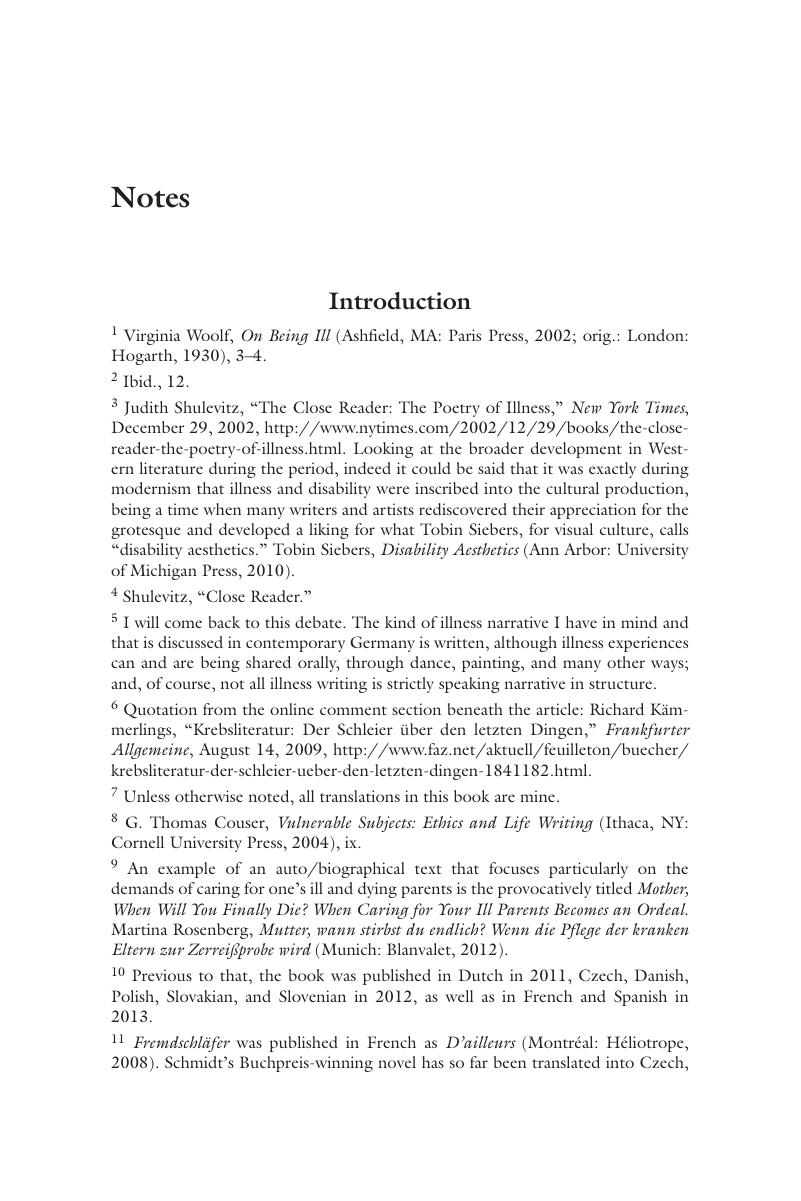Book contents
- Frontmatter
- Dedication
- Contents
- Acknowledgments
- Introduction: Contemporary German-Language Illness Writing as Literature; Analyzing Narrative Strategies, Aesthetic Forms, and Experimentations with Genre through the Lens of Disability Theory
- 1 Autofiction, Disgust, and Trauma: Negotiating Vulnerable Subject Positions in Charlotte Roche's Schoßgebete (2011)
- 2 Looking Beyond the Self—Reflecting the Other: Staring as a Narrative Device in Kathrin Schmidt's Du stirbst nicht (2009)
- 3 Intertextuality and the Transnational in Verena Stefan's Fremdschläfer (2007): Writing Breast Cancer from beyond the Border
- 4 Confronting Cancer Publicly: Diary Writing in Extremis by Christoph Schlingensief and Wolfgang Herrndorf
- Conclusion: “Und was dann”; Recent Developments and Research Desiderata
- Notes
- Bibliography
- Index
- Frontmatter
- Dedication
- Contents
- Acknowledgments
- Introduction: Contemporary German-Language Illness Writing as Literature; Analyzing Narrative Strategies, Aesthetic Forms, and Experimentations with Genre through the Lens of Disability Theory
- 1 Autofiction, Disgust, and Trauma: Negotiating Vulnerable Subject Positions in Charlotte Roche's Schoßgebete (2011)
- 2 Looking Beyond the Self—Reflecting the Other: Staring as a Narrative Device in Kathrin Schmidt's Du stirbst nicht (2009)
- 3 Intertextuality and the Transnational in Verena Stefan's Fremdschläfer (2007): Writing Breast Cancer from beyond the Border
- 4 Confronting Cancer Publicly: Diary Writing in Extremis by Christoph Schlingensief and Wolfgang Herrndorf
- Conclusion: “Und was dann”; Recent Developments and Research Desiderata
- Notes
- Bibliography
- Index
Summary

- Type
- Chapter
- Information
- The Wounded SelfWriting Illness in Twenty-First-Century German Literature, pp. 167 - 208Publisher: Boydell & BrewerPrint publication year: 2018

